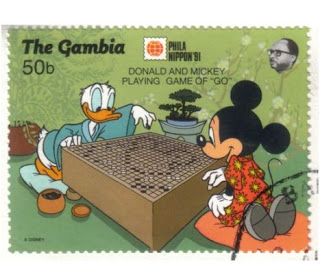So, some thoughts on the new system for American Go Professionals. This has been weighing on my mind, because I always thought it would be cool if there was more international participation in the professional Go world. It'd be nice to see someone in the top three other than Sedol Li, Li Gu, and Changho Lee. However, when I heard news that there would be a professional system coming to America, I felt skeptical, not excited. Don't get me wrong, I'm glad the Korean Baduk Association is going ahead with it. They're putting up some serious money to make sure that this endeavor comes out. It should be done sooner rather than later, but it feels like it's way to soon and that there just isn't going to be enough support from the general population for it to be popular. Most Americans have never seen Go, and only a small percentage of those that have actually play. To top it off, even only a small percentage of those that play have any aspirations to become a dan level player, let alone a professional.
The first American professionals are going to be Chinese and Korean immigrants or American born Chinese. It will probably be someone who came to the United States when they were four. I have no idea what the salary would be, as the first American professionals are not going to be in line to win the Samsung Cup anytime soon. The strongest American players would be doing it as a side thing; they'd have their own professional life in some other area worked out and just play Go as a professional for a trip to Asia. Putting a hold to life for a few years to take the necessary amount of time to really study Go is out of reach for someone not already in a secure financial situation. Plus, the KBA is going to be subsidizing this for awhile to come. I'm not sure how much money the AGA pulls in from membership and donations, but they're not going to have a lot of help. I can maybe picture a Chinese or Korean businessman whose lived in the United States for a number of years sponsoring a tournament, Cotsen style, but that's going to be few and far between.
As for the future, I think the best way to go about making America more similar to Korea or China, in terms of the number of people who play Go, will require some grassroots effort. As it stands, I cannot imagine an American parent with no connection to Asian culture let their kid study twelve hours a day to professionally play a game they neither understand nor respect. You'd have to have a massive cultural perception change. Even Hikaru no Go has not made an appreciable dent in this regard. I'm personally thinking of some was myself, and when summer rolls around I can take some of my secret projects and make them into a reality. We'll see what happens in the future.


















